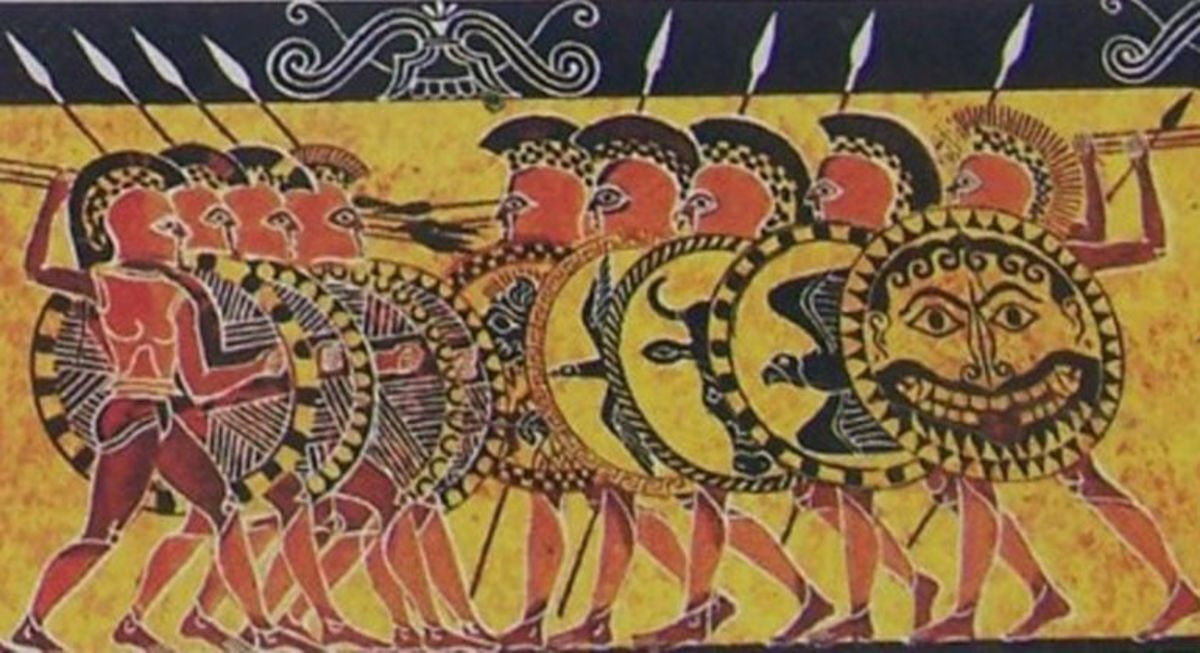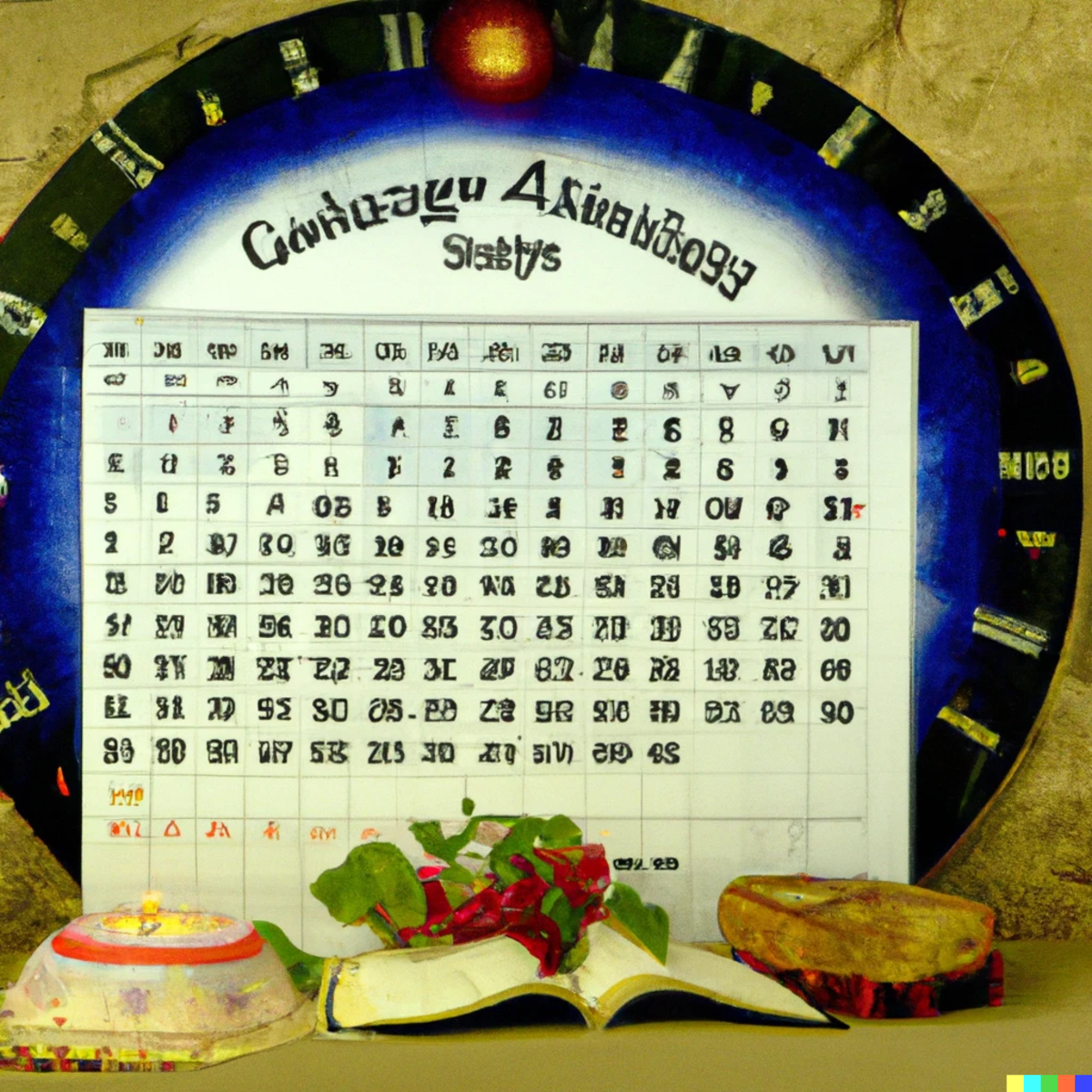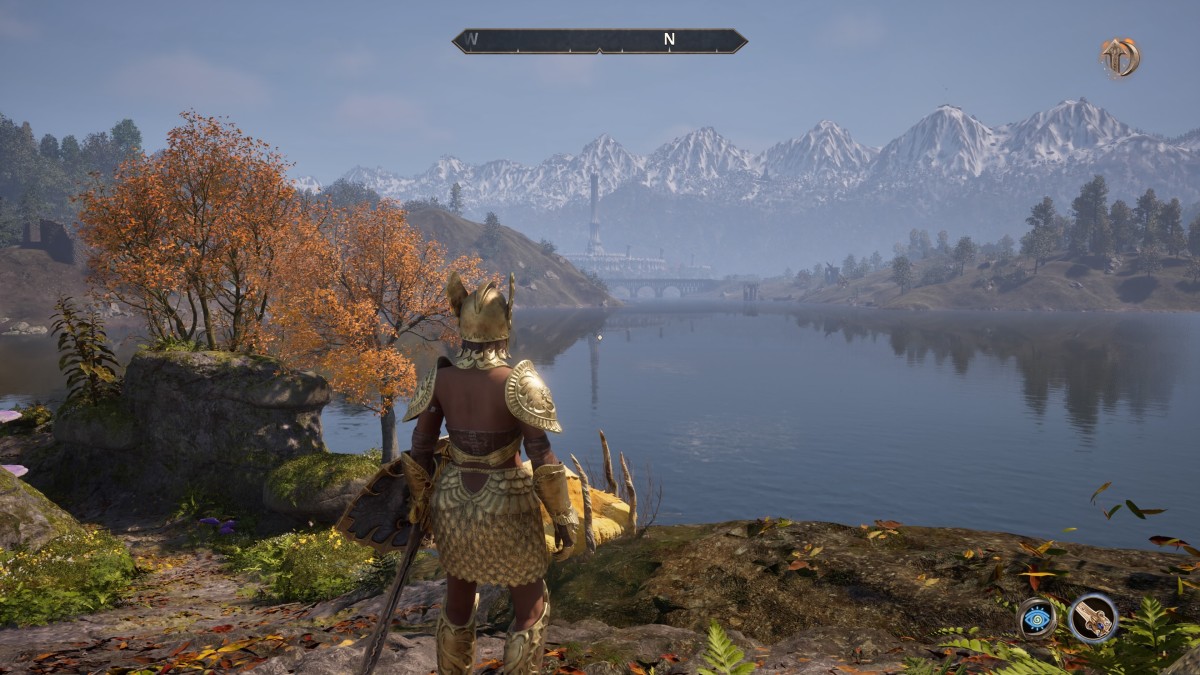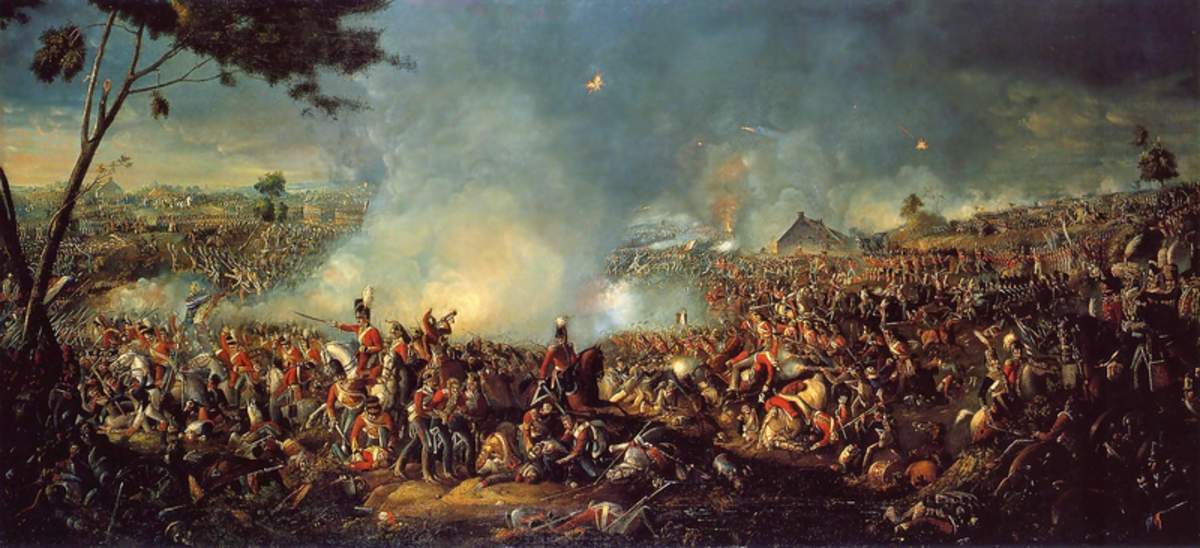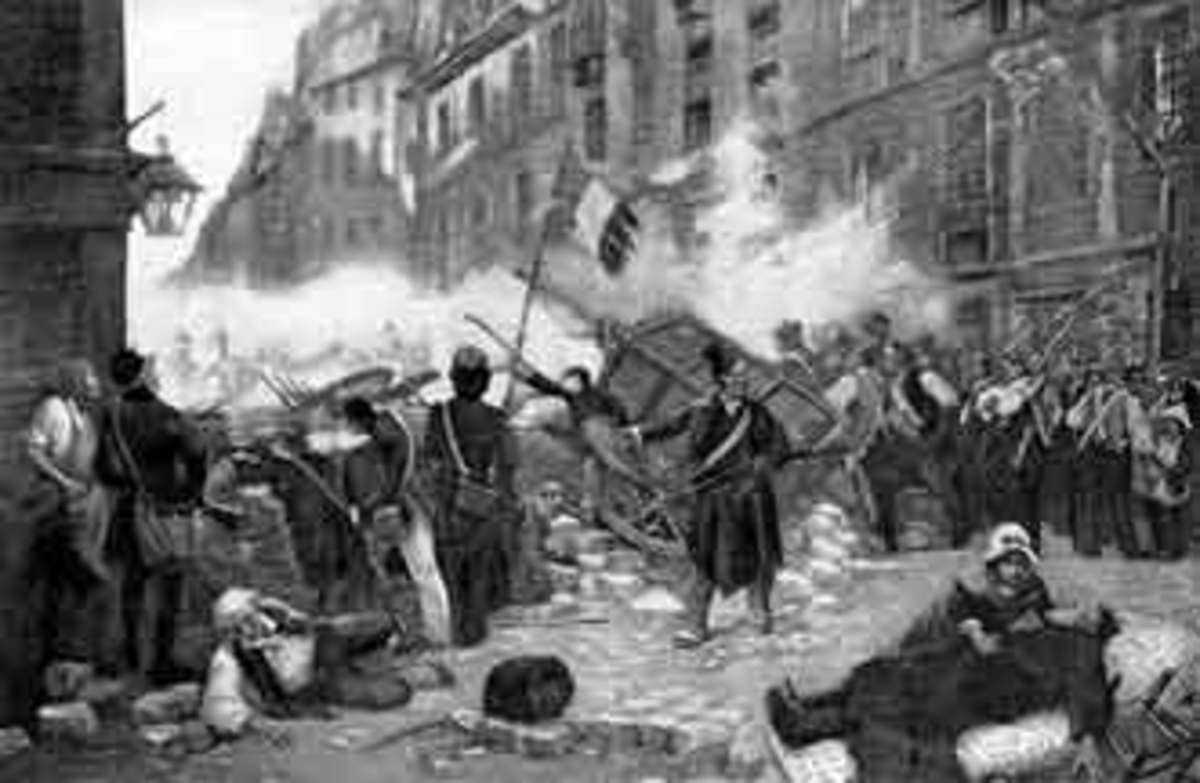Conflict & Wars Around the Globe - How weapons changed the outcome of war
The heritage of humanity
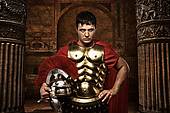
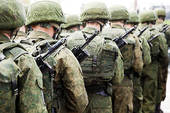


The Profound effect of weapons being introduced in battle
Is history doomed to keep repeating itself?
Killing for the government - does that make it OK?
Is killing ever justifiable, except for self protection?
Our religion says yes? Do you agree?
A continuing cycle of barbaric conflicts and wars.
As wars & conflicts continued to escalate throughout history the progression of destructive weapons also needed to become more powerful and more deadly.
Humans began the transition from food gathers to food producers around 10,000 BC. This transition brought new dangers as well as new opportunities. Conflict started when the producers sought to increase their lands and wealth at the expense of their neighbors, or defend what they already had, against the non-possessors. A specialized class of warriors was needed to protect the new form of democracy headed by King-ships, rather than merely the protection of individual communities.
Not much is known about these early armies, but cave paintings show they were familiar with 2 basic tactical formations: the line and the column; and they learned how to carry out 'flank maneuvers'.
For over 70,000 years the main weapon for hunting quarry (both animal or human) had been the spear. The spear was quite useful and versatile as it could be used for throwing or thrusting. Circa 10,000 BC two new and powerful weapons were introduced: the bow and the sling, and dramatically increased fire power. Houses and fortifications had to be improved to protect against these new weapons: thicker and higher walls of both buildings and the fortifications, surrounding towns/cities were required.
As fortification improved, so did weaponry to overcome them. The biggest impact was the discovery of metal. Bronze was the first, around 3,000 BC. It had the brittleness of stone and was easily fashioned into durable points and sharp edges. Also fashioned from bronze were shields, helmets and scale armor.
Iron was introduced around 1500 BC and was even stronger than bronze. War could now be waged on a more deadly scale than ever before.
The war chariot, also came into existence around 3,000 BC and by 1800 BC it had been improved: more light weight, spoked wheels, drawn by several horses rather than one, giving it greater speed and maneuverability and could carry as many as 4 warriors. Each chariot provided an arsenal of one driver, javelin throwers, and archers.
The Assyrians were the first major power to use horsemen as combatants. The war chariots dessicated the enemy ranks first, then the horsemen circled them on the sides (flank maneuvers).
Fire was also a powerful weapon introduced in battle. Blazing arrows (also called "messengers of death") dipped in crude petroleum, which seeped naturally from the ground in many parts of the middle east, was lit and shot into the cities, or enemy ranks. Crude petroleum was also used to create a billowing wall of fire around a siege site.
The psychology of warfare was also well known to the Assyrians, who used it with amazing success. Atrocities were committed against rebellious people with the intent of dissuading others . Lands were laid waste, cities were destroyed, and the inhabitants, (men, women and children alike) were slaughtered by the thousands. Captives were horribly mutilated, flayed, and burned to death all to drive home the same simple dissuasive message. After conquering the city of Babylon in 689 BC, Kind Sennacherib wrote:
Like the oncoming of a storm i broke loose and overwhelmed it like a hurricane. With their corpses, i filled the city squares. The city and its houses, from its foundations to its top, i destroyed, i devastated, i burned with fire. The wall and outer wall, temples and gods, temple towers of brick and earth, as many as there were, i razed and dumped them into the Aruhtu Canal. Through the midst of that city i dug canals, i flooded its site with water, and the very foundations thereof i destroyed. That in days to come the site of that city, and its temples and gods, might not be remembered, i completely blotted it out with floods of water and made it like a meadow.
As powerful as Assyria was at its zenith, it could not endure indefinitely. At the end of the seventh century BC, an alliance of neighboring states finally succeeded in defeating its armies and in 612 BC, in sacking the imperial capital of Nineveh. After hundreds of years of dominance, in the Middle East, Assyria's fall was comparatively abrupt. Its authority in the region was inherited first by a resurgent Babylon and then by the Persians who, though unrelated to the Assyrians, were the inheritors of their military organization and strategy. Long after Assyria had become a distant memory, throughout the sixth and fifth centuries BC, Assyrian ways of war were enabling the Persians to conquer their own vast empire, which stretched from the borders of India to the coasts of Turkey.
Through the early centuries of the first millennium BC, local warlords were losing their lands and fortunes to the armies of the aristocratic armies, who wanted to control all the wealth and the economy. So they banded together, and in the 7th and 6th centuries BC, after they developed the new Hoplite Phalanx (See Picture and description below) and became known as the Hoplite Soldiers.
The idea of communal dependence that had given rise to the hoplite was reflected in their tactics: they fought not as individuals, but as a mass. The encounters between these mobile human fortresses depended on brute force as much as courage, and the Greeks had an appropriate name for them: othismos, or "the shoving".
In the early days of the city-states, disputes were often settled by individual champions, or by teams of champions, fighting under strict rules. One such battle contest was between 300 soldiers from Argas and 300 from Sparta, circa 546 BC to settle the dispute as to who owns the territory of the Thyrea. Both sides claimed victory after all were dead except one Spartan survivor left on the battlefield and 2 Argive survivors who had fled the battlefield. Since they were unable to agree, they plunged into a full scale battle which the Spartans won.
Alexander the Great
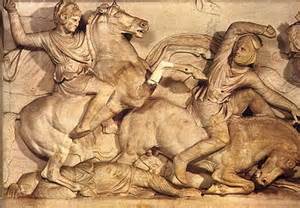
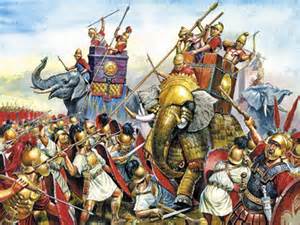
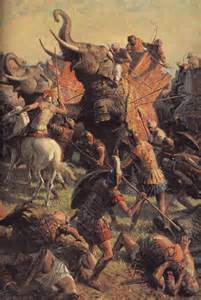
Some of the major conflicts
They following is a brief summary of some of the major conflicts & wars to conclude the era of 500 AD to 1500 AD:
- 490 BC. Hoplites stood against the invading Persians and met in battle at Marathon. The Greeks, although fewer in number, out maneuvered the Persians and drove them out.
- 334 BC. Alexander the great of Macedonia defeated the Persian armies. It was said that the Persian army lost thousands of lives and the Macedonians only 115.
- 333 BC. Alexander took control of all of Asia Minor and headed for Syria. The Persians were defeated again.
- 332 BC. After 6 months of battle between Alexander's army and the Syrians, the city of Tyre (today known as Lebanon) was defeated. Tyre was burned after Alexander's army went on their "orgy of killing and destruction". The 2,000 surviving inhabitants were crucified. Then on to Gaza, which fell after a 2 month battle, and in November of 332 BC Alexander entered Egypt in triumph. After he was crowned Pharaoh he headed for Mesopotamia for the final showdown at the Persian heartland. In October of the following year he engaged and defeated the Persian army. With the victory of Gaugamela, Alexander put an end to the power of the Persians.
- After occupying Babylon and destroying the Imperial capital of Persepolis, Alexander moved east toward India.
- 326 BC. After defeating the Indian army (and 200 elephants) near the Hydaspes River, he headed deeper into India. After 8 years of battles and marching 17,000 miles his troops refused to go any further. So he reluctantly agreed to lead them back home. But when they reached Babylon, he fell ill with Malaria and died on june 10, 323 BC. The conqueror of western Asia, and arguably the greatest general the world has ever seen, was only 32 years old when he died.
- After many years of battling to see who could replace Alexander, the Macedonians never quite recovered.
- 280 BC. By this time Rome was established as a major power.
- 264 BC. The first of 3 wars against Carthage, the so called "Punic Wars" began when Rome intervened in the affairs of Sicily.
- 241 BC. After nearly 25 years of continuous struggling, the Carthaginians were driven out of Sicily. Rome had prevailed.
- 218 BC. The second Punic was started between Romans and Carthaginians who were invading Italy. After 3 wars at: 1.) Trebbia River, 2) Lake Trasimeno, and 3) Cannae, where the Romans lost more that 45,000 soldiers alone, they (Romans) were defeated.
- 212 BC. After restoring their manpower and retaliating, the Romans re-defeated the Carthaginians in the year 202 BC.
- By the end of the 1st century AD, Rome was the prevailing power.
Tank and machine gun
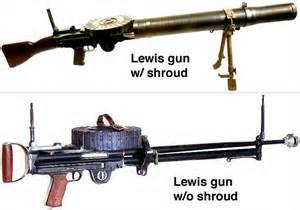
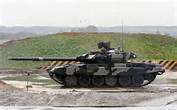
Advances in Technology
The 100 years following Napoleon's defeat in 1494 saw unprecedented advances in the technology of annihilation: tanks, machine guns, long range artillery, airplanes, submarines; all to be used in the great conflagration of 1914 - 1918 at the cost of more than 10 million lives. Barely a generation later, the powers were again at one another's throats. This time fighting on a truly global scale with weapons that were capable of destroying not just armies, but entire populations. The climax came in 1945, when the U.S. dropped nuclear bombs on the Japanese cities of Hiroshima and Nagasaki.
As you can see, from the inception of conflicts & wars throughout our history, the weapons have become more and more sophisticated. So, the concept of wars is not a new one in our generation, but has been truly a barbaric human legacy. Leading to where? If history is to be continued in this same vein, then there is no alternative to inevitable total annihilation of the human race. And for what? Greed. The ultimate quest for mankind. How sad for our future children, and theirs - if there really is to be a future.
It would be foolhardy to think that given our entire history of conflicts & wars, the escalation of weapons of mass destruction, and the prevailing quest for wealth, greed, and lust for power around the globe will subside anytime soon. Looking back at the rise and fall of all the great powers, and advanced civilizations lost to time, we, as a people (humanity/mankind) have learned absolutely nothing at all. The current civilization (and i use the term civilized, guardedly) will be lost in the past with all the others.
Perhaps this is our true lot in life: fighting, bickering, killing, destroying, etc...?
With the upcoming predicted alignment of the planets in December of 2012, this may be the true beginning of the end for this era in time. Like the dinosaurs, man should probably be eradicated, so humanity can have a fresh new start, in the hopes of finally creating a society that can live in peace and harmony.
There is little, if anything at all, to be proud of in this continuing cycle of barbaric conflicts & wars.
by: d.william 07/18/2011
The Hoplite Phalanx
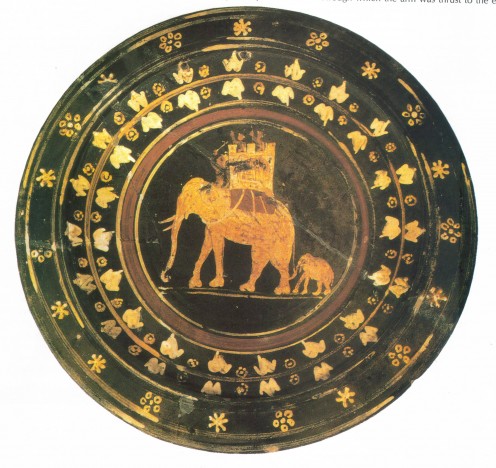
Early 3rd century decorated shield
The central decoration of this 3rd century BC Italian dish (shield) shows a young and a mature Indian elephant, the latter surmounted by a howdah (crenelated tower) containing two warriors. Used mainly by Indian and Asian armies as living tanks; elephants caused cavalry horses to stampede in panic, and terrified foot soldiers, who had never seen these awe inspiring beasts before. When an elephant got out of control, however, it could cause as much destruction among its own ranks as among the enemy. Poison tipped scimitars were sometimes tied to the tusks, while archers rained down arrows from the fortified howdahs. An effective defense against elephants was to plant sharp spikes in the ground that pierced the soft soles of the animals' feet. (courtesy of the historical archives)
- War Along America's Border: The Mexican Drug Cartels
If you are not a resident of California, Arizona, New Mexico or Texas, some of this hub will be astonishing. If you live in Southern California or along the Mexican border, you are in fear of Mexico's war with their drug cartel's may spill over into. - THE WAR ON AMERICA is here, it is real, it is now!
The War in America. conspiracy theory, terrorism, economic disasters - all real and present dangers to our world. - Conflicts & Wars Around the Globe - Part One.
THE GREATEST LEGACY OF MAN? A Continuing cycle of barbaric conflicts & wars. Conflict was not always the way of humanity. The small clans of nomadic hunter - gatherers that roamed the earth during the... - Conflicts & Wars Around the Globe - Part two
The Roman standard bearer and infantryman, shown in a detail from a relief, represents the fundamental and most enduring component of all armies until the fall of the Roman Empire - the common foot soldier,...

